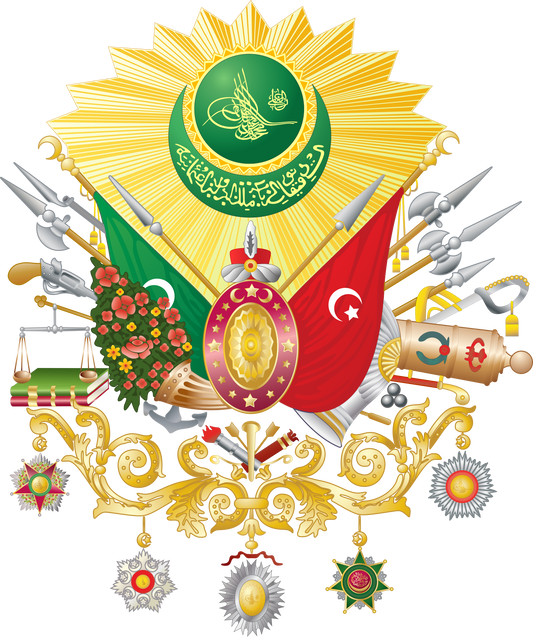In Ottoman society, flowers were a part of not only gardens but also every aspect of life. From palaces to modest homes, small corners of paradise, aesthetically arranged, were found in every corner. In this article, we will examine the place of flowers in Ottoman life, particularly their representation in baskets and vases, and the Iznik tiles that bear the traces of this understanding.
The Value Given to Flowers in the Ottoman Empire
Floriculture was a popular pastime among all segments of the Ottoman population. Travelers and ambassadors visiting the empire particularly noted this love of flowers. Ambassador Busbecq, credited with bringing tulip bulbs to Europe, wrote in a letter, admiring the flower fields he encountered along his route from Edirne to Istanbul. Evliya Çelebi also described how the roses, tulips, hyacinths, daffodils, and lilies in vases placed among the worshippers in the Old Mosque and the Three-Balconied Mosque in Edirne filled the mosques with fragrance.
Flower Presentation in Vase and Basket
This elegant approach is evident not only in mosques but also in palaces and mansions. Miniatures and engravings, small niches on walls, tables, and poolsides feature vase-like floral arrangements. In his work on etiquette, Mustafa Ali of Gelibolu, a 16th-century poet, emphasizes the necessity of "having flowers in vases at the gathering, and setting the table with fruit." As spring and summer draw to a close, floral motifs in hand-carved ornaments compensate for the absence of nature. The repetition of a vase on every tile in skirting tiles is one of the most aesthetic examples of this approach.

Flower Arrangements on Iznik Tiles
Topkapi Palace and Edirne Palace Panels
From the mid-16th century to the end of the 17th century, the flower-in-a-vase motif was quite popular in İznik tile production. The large vase panels in the harem apartments of Topkapı Palace and the imperial gallery of the Yeni Mosque are examples of this. On tiles thought to be from the Edirne Palace, now scattered throughout museums worldwide, tulips, roses, carnations, lilies, jonquils, and irises rise from ornate bowls, transforming spaces into gardens of paradise.
Reflections of Floral Motifs in Artworks
Eve Throne
The love of flowers didn't just transfer from nature to the home; many tableware, from porcelain plates to metal vessels, was adorned with flowers. Symmetrical floral arrangements, scattered from vases to sides, were particularly favored for their aesthetic appeal. Such ornamentation was quite common in mother-of-pearl and tortoiseshell craftsmanship in the 17th and 18th centuries.
The Arife Throne, believed to have been designed by Sedefkâr Mehmed Ağa, the architect of Sultan Ahmed I's mosque, is a magnificent example of this floral scheme. Tulips, carnations, and roses emerge from wide bowls and adorn the entire surface, amidst turquoise, ruby, emerald, and chrysolite stones set into the throne's surface.

Natural Flowers in Kat'i Art
While classical-era miniatures typically feature a single type of flower per vase, mixed bouquets are seen in still-life-influenced floral paintings. Examples of Kat'ı art, which reflect the Ottoman love of flowers, are particularly noteworthy in this regard. Albums containing floral figures created by pasting colored paper on top of each other present naturalistic flowers in ornate vases.
Fruit Room Decorations
The 18th century saw significant changes in vase shapes and floral arrangement. The painted relief plaster decorations on the small iwan vault of Sultan Ahmed III's library in Topkapı Palace and the floral compositions painted on the wooden floor of the Fruit Room are elegant examples of this period.

Ottoman Rococo and the Evolution of Motif
Tulips, Nightingales, and the European Influence
Over the centuries, artists have diversified flowers not only in motif but also in form. These flowers were presented in large footed bowls, cube-shaped jars, cylindrical cups, wide-mouthed vases, and glass forms referred to in price registers as "crystal glasses" or "flower bottles." Tulips, in particular, were featured in elegantly long, slender tulip stands. Çesmi-bulbulleri (Turkish nightingales) adorned both homes and palace chambers with floral arrangements in handled vases, baskets, and bowls in the Turkish Rococo style.
Rather than directly imitating European styles, Turkish Rococo developed as an original approach. You can find our blog post detailing the influence of this style on tile art here.
An Aesthetic Heritage That Reaches the Present Day
This elegant tradition of flower arrangement, dating back to the Ottoman era, is not merely a decorative element; it is also an expression of aesthetics. Carrying, presenting, and placing flowers in a vase or basket is a tradition that enriches the spirit of living spaces. Traces of these elements can still be seen today in Iznik tiles, historic mosques, miniatures, and handicrafts.
If you would like to bring this aesthetic approach to your living spaces, you can examine our collection of Iznik tiles with floral motifs here.




